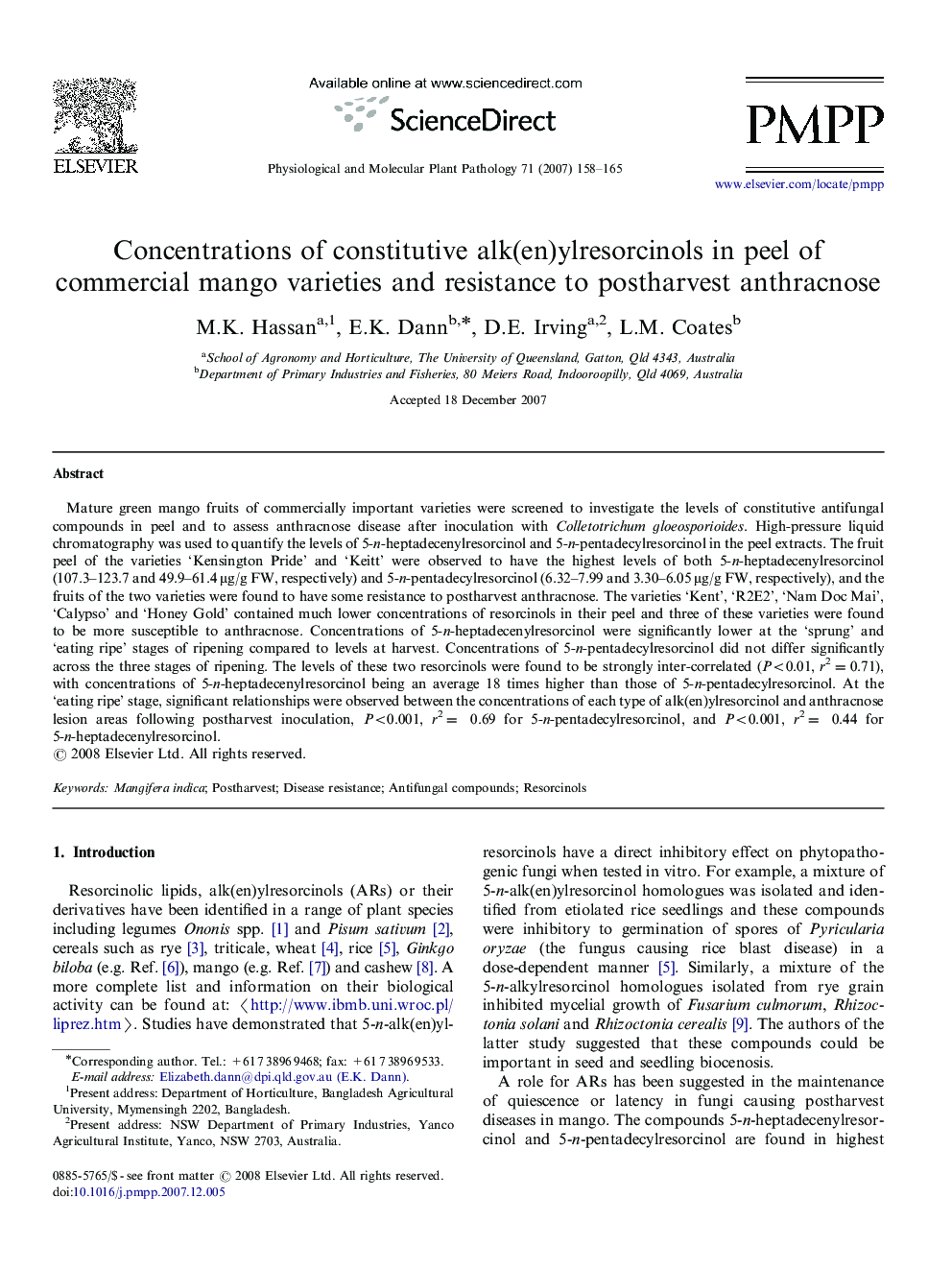| Article ID | Journal | Published Year | Pages | File Type |
|---|---|---|---|---|
| 2836660 | Physiological and Molecular Plant Pathology | 2007 | 8 Pages |
Mature green mango fruits of commercially important varieties were screened to investigate the levels of constitutive antifungal compounds in peel and to assess anthracnose disease after inoculation with Colletotrichum gloeosporioides. High-pressure liquid chromatography was used to quantify the levels of 5-n-heptadecenylresorcinol and 5-n-pentadecylresorcinol in the peel extracts. The fruit peel of the varieties ‘Kensington Pride’ and ‘Keitt’ were observed to have the highest levels of both 5-n-heptadecenylresorcinol (107.3–123.7 and 49.9–61.4 μg/g FW, respectively) and 5-n-pentadecylresorcinol (6.32–7.99 and 3.30–6.05 μg/g FW, respectively), and the fruits of the two varieties were found to have some resistance to postharvest anthracnose. The varieties ‘Kent’, ‘R2E2’, ‘Nam Doc Mai’, ‘Calypso’ and ‘Honey Gold’ contained much lower concentrations of resorcinols in their peel and three of these varieties were found to be more susceptible to anthracnose. Concentrations of 5-n-heptadecenylresorcinol were significantly lower at the ‘sprung’ and ‘eating ripe’ stages of ripening compared to levels at harvest. Concentrations of 5-n-pentadecylresorcinol did not differ significantly across the three stages of ripening. The levels of these two resorcinols were found to be strongly inter-correlated (P<0.01, r2=0.71), with concentrations of 5-n-heptadecenylresorcinol being an average 18 times higher than those of 5-n-pentadecylresorcinol. At the ‘eating ripe’ stage, significant relationships were observed between the concentrations of each type of alk(en)ylresorcinol and anthracnose lesion areas following postharvest inoculation, P<0.001, r2= 0.69 for 5-n-pentadecylresorcinol, and P<0.001, r2= 0.44 for 5-n-heptadecenylresorcinol.
